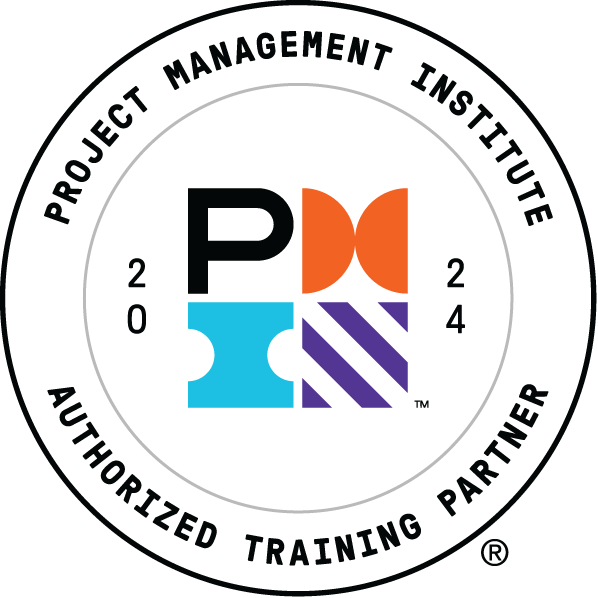Classroom Sessions:
Online Sessions:
| 03 - 07 Jun 2024 | Online | $3,950 | |
| 11 - 15 Nov 2024 | Online | $3,950 |
INTRODUCTION
Some of the most prevalent risks on any project originate from the failure to effectively identify and analyze the day-to-day risks that occur during the delivery of all projects.
This Project Risk Management & Compliance training course addresses the specific nature of risks that occur during the design & execution phases of all projects. The training course will provide delegates with the knowledge and skills required to effectively identify and manage project risks through minimizing their levels of uncertainty and maximizing their control. This will, in turn, improve their ability to deliver projects on time, within budget, and with a clear health & safety record.
Due to the dynamic environments in which they exist, projects are exceptionally vulnerable to risk and, in order to successfully deliver projects, a proven and proactive approach is essential to project risk management. By definition, uncertainty is inherent in every risk, and one of the primary objectives of project risk management is to minimize uncertainty so as to improve the likelihood of achieving desired project outcomes. During this training course, delegates will learn to effectively identify, analyze, respond, and control all risks that may have either a negative or positive impact on project outcomes.
This GLOMACS Project Risk Management & Compliance training course will highlight:
- Key elements in risk management planning
- The importance accurate risk identification
- How to effectively describe and analyse risks
- The difference between opportunity and threat-based risks
- How to create effective risk response plans
Objectives
This Project Risk Management & Compliance training course is designed to provide Project Managers, Team Leaders, Engineers, Risk Managers, and Project Support Members with the skills and knowledge to successfully manage risks throughout the project lifecycle. As such, delegates will:
- Learn how to accurately identify and describe project risks
- Develop skills in applying proven risk analysis methods
- Understand different project risk management techniques
- Be able to differentiate between opportunity and threat risks
- Develop techniques to define risks based on project context and risk boundaries
- Learn to distinguish between real and perceived risks
Training Methodology
The Project Risk Management & Compliance training course methodology will incorporate a combination of theory and skill-based training components, applying hands-on exercises, facilitation of group discussions, practical case studies, and real-life examples.
Organisational Impact
The Project Risk Management & Compliance training course will provide direct organizational benefits through improved project risk management practices. By applying the methods learned and practiced during the training course, organizations will:
- Reduce time spent managing project risks
- Improve project execution productivity
- Increase risk management efficiency
- Protect project values through accurate risk identification and analysis
- Achieve project objectives through effective risk response planning and control
- Enhance project risk knowledge required for effective Enterprise Risk Management
Personal Impact
Participants will develop additional and valuable project management skills, essential not only to project risk management, but to project management as a whole, including:
- Developing risk management planning skills
- Learning to effectively manage risks in a team environment
- Refining their risk identification skills
- Learning to balance the relationship between threat-based and opportunity-based risks
- Understanding how and when to apply qualitative and quantitative risk analysis techniques
- Developing the necessary skills required to effectively control risks
WHO SHOULD ATTEND?
The Project Risk Management & Compliance training course is tailored for all personnel who are either involved in, or responsible for, the successful delivery of projects of all types and sizes.
This GLOMACS training course is suitable to a wide range of professionals but will greatly benefit:
- Project Managers
- Project Risk Managers
- Project Engineers
- Quality Assurance Managers
- Contract Managers
- Project Consultants
- Discipline Engineers
- Technical Assistants
DAY 1
Risk Management Framework and Planning
- Key Definitions
- The PMBOK® Six Risk Management Processes
- Purpose & Benefits of Risk
- Responsibilities in Project Risk Management
- Integrating Risk Management into the Project Management Process
- Risk Management Planning
- Risk Planning Process
DAY 2
Risk Identification Process
- The Effect of Project Macro-Environment on Risk
- The Effect of Project Complexity on Risk
- Risk Identification Techniques
- Managing Risk through Project Estimating
- Managing Risk through Earned Value Management
- Schedule Risk Management – Critical Path Method & PERT
DAY 3
Risk Assessment Process
- Qualitative Risk Analysis
- Bow-Tie Risk Analysis Technique
- Probability/Impact Risk Matrix Technique
- Quantitative Risk Analysis
- Monte Carlo Simulation
- Decision Trees and Expected Monetary Value
- Managing Project Risks through Integrity Assurance
DAY 4
Risk Response Plan Development
- Risk Prioritisation
- Risk Response Strategy Guidelines
- Response Strategies for Threats & Opportunities
- Response Planning & Analysis
- Alternative Responses
- Risk Response Validation
- Contingency & Management Risk Reserves
DAY 5
Risk Response Control
- Resource Management
- Risk Control Guidelines
- Risk Control Inputs
- Risk Control Tools & Techniques
- Risk Control Outputs
- Risk Reporting & Documenting
- Course Summation & Work Session Review
- On successful completion of this training course, GLOMACS Certificate with eligible Continuing Professional Education credits (CPE) from National Registry of CPE Sponsor and Professional Development Units (PDUs) / Contact Hours from Project Management Institute (PMI®), will be awarded to the delegates
Endorsed Education Provider
A PMI registered mark
GLOMACS is registered with the National Association of State Boards of Accountancy (NASBA) as a sponsor of continuing professional education on the National Registry of CPE Sponsors. State boards of accountancy have final authority on the acceptance of individual courses for CPE credit. Complaints regarding registered sponsors may be submitted to the National Registry of CPE Sponsors through its website: www.NASBARegistry.org
In Association With

PetroKnowledge
Our collaboration with Petroknowledge aims to provide the best training services and benefits for our valued clients

Oxford Management Centre
A GLOMACS - Oxford Management Centre collaboration aimed at providing the best training services and benefits to our valued clients.

The Energy Training Centre
Our collaboration with Energy Training Centre aims to provide the best training services and benefits for our valued clients

KC Academy
Our collaboration with KC Academy aims to provide the best training services and benefits for our valued clients




